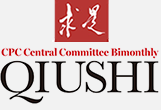Working together for Belt and Road science and technology community
The Second Belt and Road Conference on Science and Technology Exchange recently held in Chengdu, southwest China's Sichuan province, offers a timely response to the rise of unilateralism and protectionism that continues to challenge global development. The gathering reinvigorated international cooperation in scientific and technological innovation, reinforcing the foundation for high-quality Belt and Road cooperation to deliver broader benefits to humanity.
Scientific and technological cooperation is a key pillar of the Belt and Road Initiative (BRI). From the launch of the Belt and Road Science, Technology and Innovation Cooperation Action Plan at the first Belt and Road Forum for International Cooperation in May 2017, to designating "advancing scientific and technological innovation" as one of the eight major steps China will take to support the joint pursuit of high-quality Belt and Road cooperation at the third Belt and Road Forum for International Cooperation in October 2023, Chinese President Xi Jinping has always placed high importance on scientific and technological collaboration in BRI cooperation. He has always championed innovation-driven development and encouraged collective efforts to seize the opportunities presented by the ongoing technological revolutions.
In recent years, China has made significant progress in advancing the Belt and Road Science, Technology and Innovation Cooperation Action Plan. Working closely with its partners, the country has strengthened top-level planning and expanded collaborative platforms. So far, China has signed intergovernmental science and technology cooperation agreements with more than 80 BRI partners, and set up more than 70 BRI joint laboratories and 10 international technology transfer centers.
At the conference, a range of new initiatives were announced, including the official launch of the International Meridian Circle Program, collaborative projects in AI and traditional Chinese medicine, as well as the creation of additional joint laboratories, research alliances, and technology transfer hubs.
A particularly meaningful dimension of the Belt and Road scientific and technological cooperation lies in its focus on technology-driven poverty reduction. China's own experience - where technological innovation played a pivotal role in lifting hundreds of millions out of poverty - offers valuable experience for the Global South.
At the conference, a dedicated forum examined how technological solutions can be leveraged to combat poverty in developing countries, sharing China's proven approaches while exploring new pathways and models for targeted, innovation-led poverty reduction.
The forum unveiled ten key technological solutions for poverty reduction, along with new research platforms designed to facilitate knowledge exchanges. Participants underscored the need for equitable access to scientific and technological advances and called for stronger international cooperation, especially among countries in the Global South.
Scientific and technological progress is a global topic and a defining issue of the times. Openness and cooperation remain the only viable path forward. As the world undergoes a new wave of technological revolution and industrial transformation, with big data, cloud computing, and artificial intelligence (AI) increasingly shaping economic and social development, cooperation in science and technology has never been more critical.
Yet, growing disparities in technological capacity, digital access, and AI threaten to widen global inequalities. The unilateral pursuit of technological hegemony by some nations - seeking to suppress others under the pretext of national security - has further fragmented the global landscape, posing significant challenges to inclusive global development.
In Chengdu, delegates voiced a shared conviction: global challenges demand collective responses. Many emphasized that "countries must join hands to advance global cooperation, drive inclusive development, foster mutual learning among civilizations, and chart a shared path of innovation."
The conference delivered a strong message: science knows no borders and should benefit all of humanity. Broad international consensus holds that scientific and technological cooperation should be open, fair, equitable, and non-discriminatory. Zero-sum competition, the politicization of cooperation, and the excessive overstretching of national security concerns have no place in the global science community.
Unity fosters shared success; partnership drives progress. Looking ahead, China remains committed to working with all partners to advance the International Science and Technology Cooperation Initiative, and to build a Belt and Road scientific and technological innovation community that is innovative-driven, open and inclusive, fair and equitable, and oriented toward shared prosperity and sustainability. In doing so, science and technology will better serve the well-being of all humanity and contribute to building a community with a shared future for mankind.
The views don't necessarily reflect those of Qiushi Journal.
























